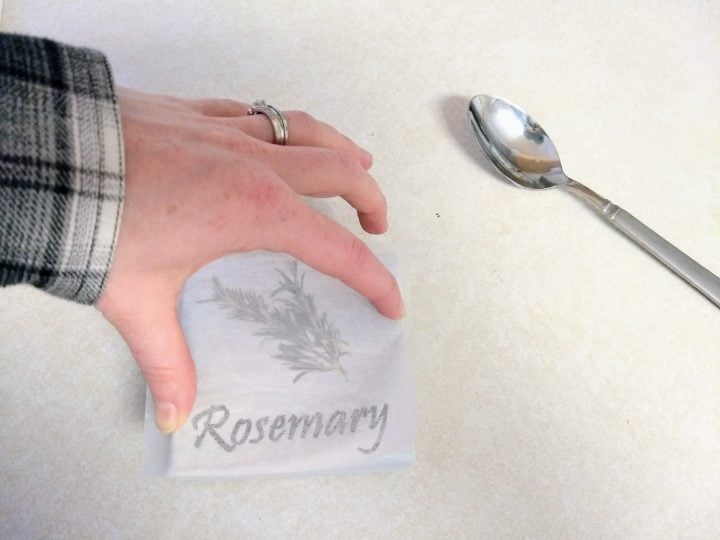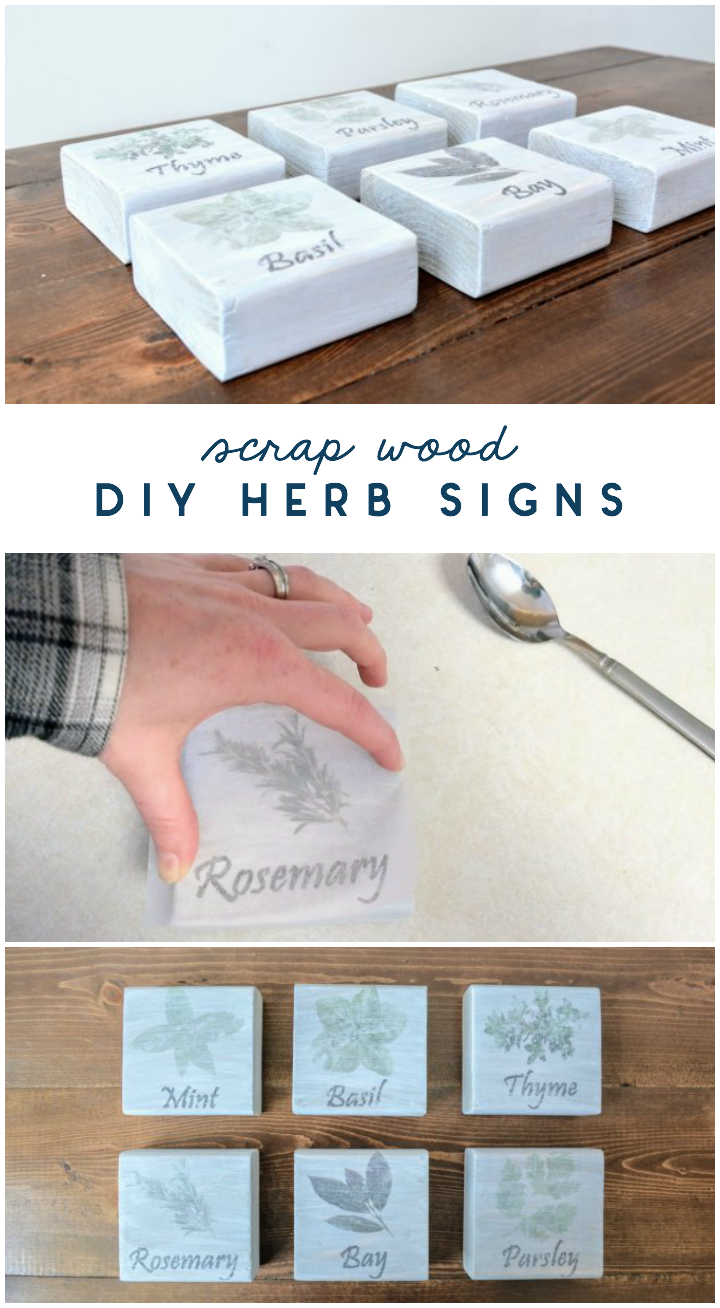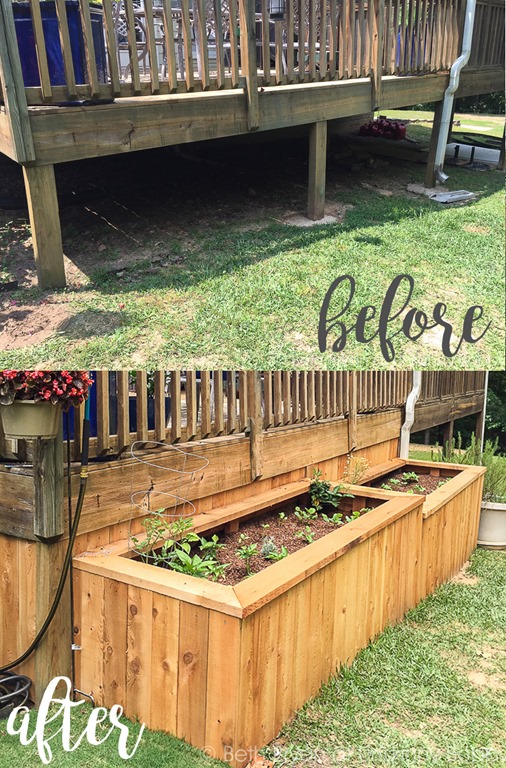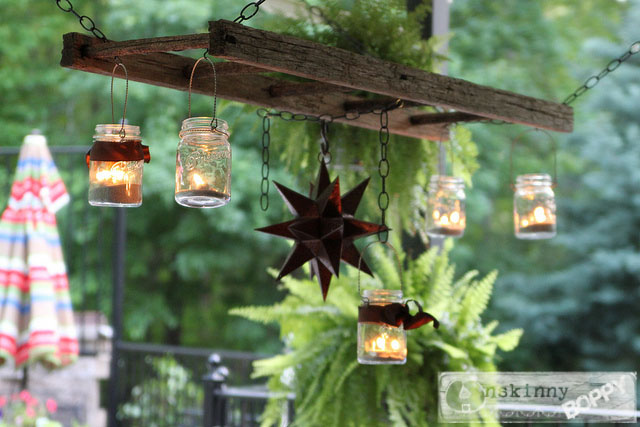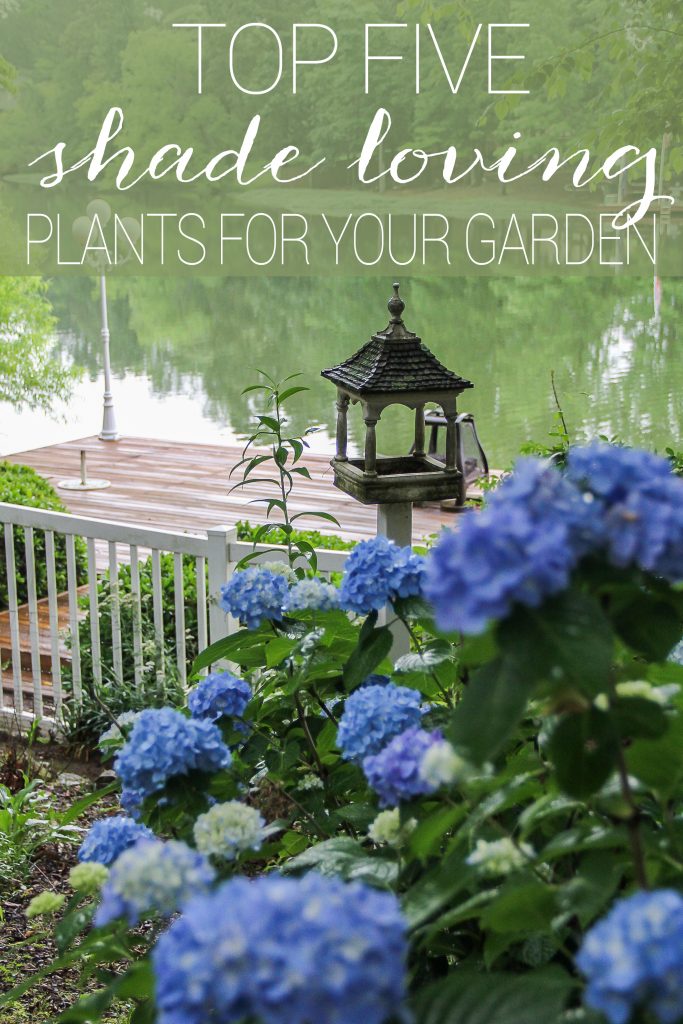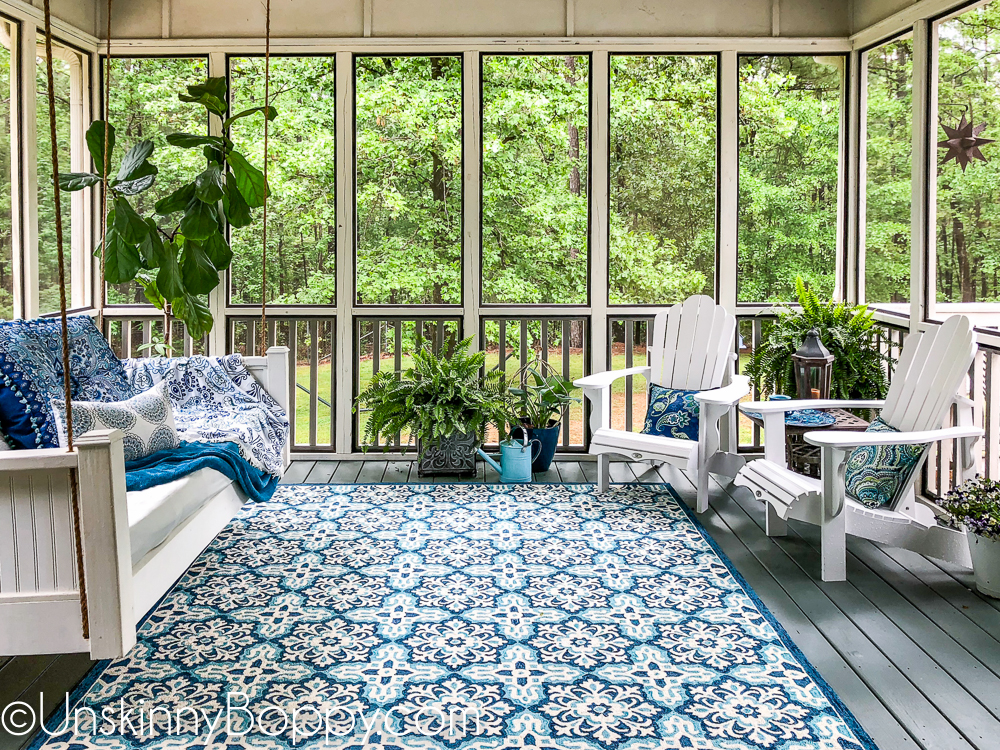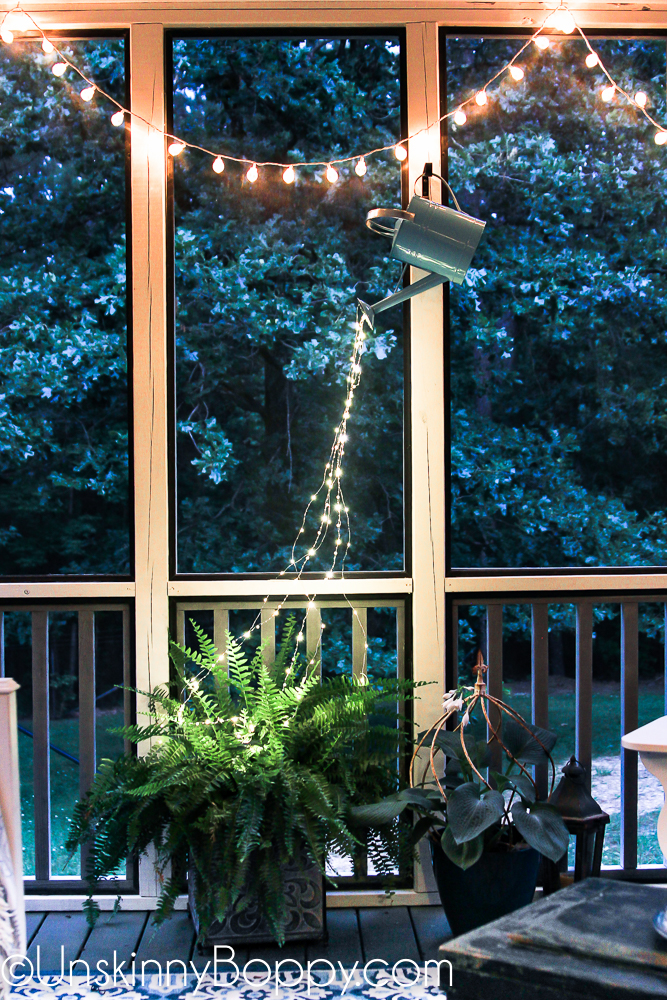I’m building a floating deck in my back yard! This is the very first post of this series, but you will be able to catch the whole thing, start to finish, right here.
Hey there! This post (or post series, rather) has been a long time coming. It’s a little tricky to do a large project like this and then share it on the blog, mainly because the project itself can be quite tiring, and breaking it into beneficial chunks takes a little time to do it right. It’s almost like building it all a second time, except fewer last-minute changes and less muscle soreness.

All that just to say, bear with me as we go through these posts. My main goal is to help clear the fog on the where/what/why, and a lot of these decisions are specific to dealing with unique challenges of my yard (sloping, building over/around a concrete patio, etc.). But if you wind up having questions as I go, I’ll try address them in future posts!
Legal disclaimer stuff: this is a personal recap, and the evolution of what I learn as I work on projects in my home. In hindsight, I often think of how I could have done something better. By no means is it a comprehensive guide for every scenario. No two houses are alike, and building codes/permitting rules vary. You will still need to research and make the best possible decision for your own home. I’m not a licensed professional. Reading and using any and all information is at your own risk. Power tools are dangerous and can kill you. Use protective safety gear, always. Don’t feed your dog chocolate, don’t stick keys in the electrical socket, and so on.
Backyard upgrades (to get to this point)
If you’ve been following along for a while, then you already know a lot of this. But for those that don’t, for the longest time with this house, I’ve been focusing a lot on the interior. I supposed that’s a pretty normal habit. We are more likely to first change the things we interact with everyday, like the kitchen, before we start fixing the part that can be more easily ignored, like the overgrown bushes in the back yard.

Each year, I dedicated a little time toward making progress, but it was hard to see (pun-intended) the forest for the trees. I killed off ivy, removed a bunch of pine trees, filled in a sinkhole, and started making cosmetic improvements (a back hedge, fire pit, corner garden, etc.). All of a sudden, late last year, things really started to click; it was time to begin the two big projects I’ve always wanted to do. As with any project, it was a matter of money, time, labor, and research. It can all seem pretty overwhelming until you get started, and I am VERY good at procrastinating when I have a lot of logical reasons to postpone at my disposal!
Timing and budgeting: a juggling act
I knew I wanted to build a shed for extra storage toward the back of my lot and began planning for that last summer (which is also underway, but that build has its own separate series). I also wanted to eventually build a floating deck off of the existing concrete slab next to the house.

Originally, I thought these projects would happen in completely different timelines. But as I was planning, I managed to bring a sponsor onboard for the shed. It’s not always easy to have the right fit come along when you are trying to plan seasonally/budget/etc., so a huge thank-you to Wood Its Real for that help! I realized that, since I had been saving up the funds already, I could basically maximize the benefits of the budget if I did both projects in one short, blazing summer of building. A lot of materials crossed over between the builds, so I reasoned that purchasing bulk amounts would be cheaper and I could save on the cost of rentals, if any. Plus, working with the same materials, I would be able to cross over the skills from one build to the next. I sketched up a quick version of how I thought everything would be done.

This seemed like a great option if I could also somehow convince K to help me design and plan it. It would be well worth the effort, I reasoned, provided that we didn’t manage to kill each other with all the sharp power tools at our disposal (thankfully, he’s a design engineer professionally and likes power tools as much as I do, so it was an easy sell). But to do any of it, we needed an actual, proper plan.
Design
I wanted the new build to create a natural flow from the patio door to the deck, from the deck to the fire pit, and so on. This would maximize the yard for an open, entertaining feel, while still giving everything separate zones.
- Patio = grill spot
- New deck = seating area
- Fire pit = fire pit shenanigans
It’s kind of a lot to fit into a single space and around the only remaining tree in the yard. Even though I removed most of the trees, I kept the central one because it makes for a natural anchor for all the new lighting that will tie everything together (patio lights make everything better!). The sketch I created seemed to make sense of everything, including the new shed, room for a vegetable garden, and so on. But as I started marking things out in the yard, I realized that extending the patio as large as I sketched out would be WAY too big.

With K’s help, we came up with an even better plan:

Although this deck design doesn’t run the full length of the existing patio, I like that it sits perfectly between the patio and fire pit. The right corner of the new deck plan is at an angle, which allows for the mower to fit in between (really. important. thing. for K; I won’t fight it, since I win by not having to mow). It keeps the shed/garden zone a little more separate from the patio and deck, but still cohesive. The step up from the existing patio and step down from the deck to the fire pit will be parallel.
Slope challenges
As of 2016, my yard is filled in, but there is still a slope toward the back. I planned it this way for good reason: water runoff. The neighbor to my left is higher in elevation than all the others, so rainwater flows in a single direction in and out of my yard. If I had graded it any differently, I would risk disrupting that water flow, even jeopardizing the fill dirt by seeing it erode right back out of my yard. I planted a hedge line in the lower area as well to anticipate stemming future erosion problems, too.

Patios and just about anything in the yard have a slight slope for the same reason. I confirmed this with a level on my own patio, and the right corner is the lowest spot. The plan has been to continue that same slope on the new deck. So, it won’t be perfectly level, but it also won’t be noticeable.
Foundation
To help build the foundation but account for leveling, sloping, etc., I did some research and found that the best (and most readily-available) fit seems to be precast pier blocks (aka deck blocks or Handi-blocks).


I also briefly considered TuffBlock (same concept, but more lightweight material). They seem much lighter and might avoid more digging, but I couldn’t find many examples of it in use on uneven ground and the supply would have been special order. Since the concrete version is in stock at Home Depot and Lowe’s, I did most of my research on these before choosing them. I think I’ll give them a try if I ever do this project again (with a new house or working on a friend’s, etc.).


In either case, these have a notch on top that fits a 2x- or 4×4 post. Since the floating deck will sit on or partially hover over the ground, I am putting them in for extra support. Where they are too high to sit on the ground, I’m digging them down partially into the dirt. On the farthest corner (closest to the fire pit), it’s actually not tall enough even when sitting on the ground, so one 4×4 post is needed there. On top of these, there will be a framework of 2×6 lumber and then the deck boards. And me, awkwardly doing bad yoga (completing steps on building a deck puts me in a goofy mood).

Ground contact lumber
One important piece of info: since most of the new deck is touching the ground, the entire support structure (everything but the deck boards) will be made from “ground contact” lumber. In my research for these projects, I discovered that there are new standards as of 2016 for treated lumber and outdoor projects. You may already know of “pre-treated/PT” lumber, which is lumber that has been chemically treated to withstand outdoor conditions better than bare wood (recommended for just about any project exposed to the elements). But now, there is a new standard, and stores are starting to carry more and more “gound contact” or “GC” pre-treated lumber.

The main difference is where you plan to use it. Here is a graphic that breaks it down depending on use (along with more details), but here’s an easy rule: if it’s anything touching the ground or within 6 inches of the ground, it should be made with ground contact lumber.
If it’s exposed to more moisture, use ground contact. If it’s something that will be difficult to reach or repair: ground contact. If it’s smarter than the average bear… ground contact.
I’ll cover a few more facts about GC lumber and even PT lumber in general as this series goes on, but there are so many details to cover! This is important enough to cover in more depth, but I don’t want to throw too many details into this initial post until I can show more of the build as examples.
Partially covering the patio
As you can see from that digital rendering above, part of the new deck will cover a small corner of the existing patio. I found this tutorial from Family Handyman, and I plan to use some of the same ideas. Basically, I’ll be attaching some 2×4 supports to the patio (using ground contact lumber once again), and the deck will go over the whole thing.

Water buildup between the concrete pad and the wood will rot wood faster, even if it’s treated. So, extra efforts will be made to raise the framework in that spot with plastic shims.
Water is the enemy
Let’s see here: ground contact lumber, slope, plastic/flashing, drainage… basically every part of this plan has fighting water in common! So far, I’ve learned that water is my biggest concern. I may actually overdo it with all of the ways I’m planning to handle it, but I hope through this process that my deck lasts a good long while.
Permits
I know this question will probably pop up a few times. I didn’t get a building permit for the deck and didn’t appear to need one (after researching it for a confusingly long time). Even though there are standards (IRC and others) that are adopted by many states, the whole thing is rather complex and took time to figure out the who/what/where/when (yes, that all matters):
- What the codes are (there are multiple standards/guidelines that might be used to determine what is adopted)
- Where they apply (city code, county code, etc.)
- When they were adopted by your local ordinance
- Who enforces it (there is often some discretion for the code enforcement officer regarding violations)
I checked with my local guidelines prior to starting (if you don’t find one for your city, start researching the county, and so on). By comparison to what I’ve found, my county seems to be on the less restrictive side. For example, one of my friends just informed me that he needed a permit in his city just to have a new range installed in his kitchen! So, this is definitely a situation where the best answer of whether or not a permit will be needed is, “it depends.” Regardless, I’m doing my best to build things smart and structurally sound, permit or no (the shed as well).
Next
So, that was a really long intro, and we haven’t even started building yet! But in the next post of the series, I’ll show you how I went from the initial design:

To an actual framework:

Keep ya posted!
The post DIY Floating Deck, Part 1: Planning and Layout appeared first on Ugly Duckling House.
More Where That Came From
How to Identify Poison Ivy, Prevent Exposure, �...

from Ugly Duckling House https://www.uglyducklinghouse.com/diy-floating-deck-part-1-planning-and-layout/




















